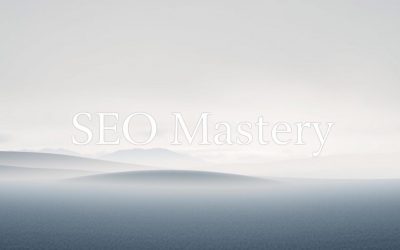Did you know that 75% of users never scroll past the first page of search results? For small businesses, this means ranking on the first page isn’t just a goal—it’s a necessity. But how can you achieve this without breaking the bank? The answer lies in smart, data-driven strategies that work for businesses of any size1.
Search Engine Optimization, or SEO, is the process of making your website more visible to search engines like Google. It’s not just about keywords; it’s about creating a seamless user experience, optimizing your site’s speed, and ensuring your content is relevant and engaging. For instance, websites that load in 5 seconds or less see 70% longer session durations compared to slower sites1.
In this guide, we’ll walk you through practical steps to improve your online presence. From local SEO tactics to mobile optimization, we’ll cover everything you need to know. Whether you’re a beginner or looking to refine your strategy, this guide is your roadmap to success.
Key Takeaways
- First-page rankings are crucial, as 75% of users don’t go beyond it1.
- Fast-loading websites increase user engagement by 70%1.
- Local searches make up 46% of all Google queries1.
- Complete Google Business Profiles attract 7x more clicks1.
- Consistent NAP information boosts local SEO rankings by up to 30%1.
Introduction to Search Engine Optimization (SEO)
Understanding how search engines work is the first step to improving your online presence. Search engines like Google help users find the information they need by analyzing and ranking websites based on relevance and authority. This process, known as search engine optimization, ensures your site appears in the right search results2.
What is Search Engine Optimization and Why It Matters
Search engine optimization is about making your website more visible to users searching for relevant content. It involves optimizing your site’s structure, content, and performance to meet search engine guidelines. For small businesses, this is crucial because 88% of users never click on paid ads, relying instead on organic results3.
Google, which holds a 64% market share, uses complex algorithms to rank sites. Websites with more inbound links and engaging content tend to rank higher. This makes optimization essential for improving your site’s credibility and user trust3.
Our Beginner’s Approach to Organic Search
For beginners, the focus should be on foundational steps like technical optimization and content creation. This includes ensuring your site loads quickly, is mobile-friendly, and has a clear structure. Regular blogging can also boost your rankings, as each post serves as a new webpage3.
Voice search and AI summarization are changing the game. Optimizing for these features can give you an edge. Understanding the difference between SEO, SEM, and PPC is also key. While SEO focuses on organic results, SEM and PPC involve paid strategies2.
| Strategy | Impact |
|---|---|
| Technical Optimization | Improves site speed and crawlability |
| Content Creation | Increases relevance and engagement |
| Voice Search Optimization | Enhances visibility for voice queries |
By focusing on these elements, you can build a strong foundation for your website’s success. This section lays the groundwork for understanding the full spectrum of search engine optimization strategies.
Understanding the Fundamentals of SEO
Search engines have come a long way since their early days. What started as simple tools for indexing web pages has evolved into complex systems powered by artificial intelligence. Today, they not only find information but also understand user intent and deliver highly relevant results4.
In the past, search engines relied heavily on basic keyword matching. Early practices like keyword stuffing and meta tag manipulation were common. However, these tactics led to poor user experiences and low-quality results. Over time, updates like Google’s Hummingbird and Panda changed the game4.
The Evolution of Search Engines
Google’s Hummingbird update introduced semantic search, focusing on the meaning behind queries rather than just keywords. This shift emphasized natural language processing and improved the accuracy of search results. Similarly, the Panda update penalized low-quality content, rewarding sites with valuable, well-structured information4.
Modern search engines prioritize user experience. Factors like page speed, mobile optimization, and engaging content now play a significant role in rankings. For example, websites that load in three seconds or less see higher engagement rates5.
Semantic search and conversational queries are shaping the future. Voice search and AI-driven algorithms are making it easier for users to find what they need. This evolution demands continuous adaptation, ensuring your site stays relevant in a rapidly changing digital landscape4.
Technical SEO Essentials for Small Businesses
Technical SEO is the backbone of any successful online presence. It ensures your website is search engine-friendly, making it easier for users to find you. For small businesses, this is especially important because 53% of all online traffic comes from organic search6.

Website Architecture and Crawlability
A well-structured website is key to attracting and retaining visitors. Search engines rely on clear site architecture to crawl and index pages effectively. For example, a clean URL structure and proper internal linking can boost your search performance7.
Regular monitoring of broken links and redirect chains is essential. A technical audit can reveal issues like missing or duplicate page titles, which hinder your site’s crawlability6.
Optimizing Page Speed and Mobile Experience
Page speed and mobile responsiveness are critical for user experience. Websites that load in three seconds or less see higher engagement rates7. Google’s Page Speed tool can help you assess performance and suggest improvements7.
Mobile optimization is no longer optional. Search engines prefer fast-loading, easily navigable pages with minimal code7. Ensuring your site is mobile-friendly can significantly improve your rankings.
| Technical Factor | Impact |
|---|---|
| Site Architecture | Improves crawlability and indexing |
| Page Speed | Boosts user engagement and rankings |
| Mobile Optimization | Enhances visibility on mobile devices |
By focusing on these technical elements, you can build a strong foundation for your website’s success. For more insights, check out our guide on optimizing blog content to enhance visibility and drive organic traffic.
On-Page Content Optimization Best Practices
Crafting high-quality content ensures both users and search engines stay engaged. On-page optimization focuses on improving individual pages to rank higher and attract more traffic. This involves refining elements like title tags, meta descriptions, and structured content to meet both user intent and search engine requirements8.

Crafting Effective Title Tags and Meta Descriptions
Title tags are one of the most critical on-page elements. They influence both rankings and click-through rates. Pages with the exact keyword in their title tag often rank higher9. Keep titles between 50-60 characters to avoid truncation in search results10.
Meta descriptions also play a key role. Pages with a meta description receive 6% more clicks than those without9. Keep them concise, under 160 characters, and include the target keyword naturally10.
Enhancing User Experience with Structured Content
Structured content improves readability and indexing. Use H1-H6 tags to organize your content effectively. This helps search engines understand the page hierarchy10.
Multimedia elements like images and videos enhance engagement. Optimize images with clear alt text and file names to improve accessibility8. Lists and bold text also make content more scannable and user-friendly.
Thoughtful keyword placement within the first 100-150 words can boost relevance without compromising quality9. Regularly test and refine your content based on user engagement metrics to ensure it stays effective.
Off-Page SEO and Link Building Strategies
Building a strong online presence requires more than just on-page tactics. Off-page strategies, like link building, are essential for boosting your site’s authority and improving search rankings. These methods focus on acquiring high-quality backlinks from reputable sources, which signal to search engines that your content is valuable and trustworthy11.
Building High-Quality Backlinks
High-quality backlinks are a cornerstone of off-page SEO. They act as endorsements, telling search engines that your site is credible. Websites with strong backlink profiles can rank up to 5 times higher in search results than those without12.
Content marketing is one of the most effective ways to acquire these links. Businesses that blog receive 97% more links to their website12. Guest posting on authoritative sites and engaging in digital PR are also proven strategies. For example, 64% of marketers say digital PR is essential for building brand authority12.
Social media engagement can amplify your content’s reach, leading to more natural backlinks. Companies that actively manage their brand presence across platforms see improved user engagement and trust11.
Step-by-Step Tactics for Link Building
Here’s how to build a diverse and natural-looking link profile:
- Identify authoritative websites: Use tools like Ahrefs or SEMrush to find sites with high domain authority.
- Reach out strategically: Craft personalized emails offering valuable content or collaboration opportunities.
- Leverage broken link building: Find broken links on other sites and suggest your content as a replacement.
- Collaborate with influencers: Partner with industry leaders to gain visibility and backlinks.
| Strategy | Impact |
|---|---|
| Content Marketing | Generates 3x more leads than traditional methods12 |
| Guest Posting | 70% of marketers find it effective for link building12 |
| Broken Link Building | Increases referral traffic by 12%12 |
By focusing on these tactics, you can build a robust backlink profile that enhances your site’s authority and search rankings. Remember, quality always trumps quantity when it comes to links.
Integrating SEO into Our Overall Digital Marketing Strategy
Combining organic search tactics with social media and paid campaigns amplifies results. A unified approach ensures consistent visibility across platforms, driving both short-term traffic and long-term brand authority13.
Aligning SEO with Social Media and PPC Campaigns
When search engine efforts align with social media, brand engagement and credibility soar. For example, businesses that integrate these strategies report higher effectiveness in reaching and converting customers13.
Paid search (PPC) and organic search complement each other. While PPC drives immediate traffic, organic search builds lasting visibility. Together, they attract qualified leads actively searching for specific products or services14.
Consistent messaging across channels reinforces search engine outcomes. Sharing data between marketing, sales, and customer service teams ensures a seamless customer journey13.
For instance, campaigns that combine search engine optimization with social media and PPC see measurable results. These include improved rankings, increased organic traffic, and higher conversion rates14.
By integrating these strategies, businesses not only boost visibility but also enhance user trust and loyalty. This holistic approach is essential for thriving in today’s competitive digital landscape.
Conclusion
Implementing smart search engine strategies is essential for small businesses aiming to thrive online. By focusing on technical optimization, engaging content, and effective link building, you can significantly improve your site’s visibility. These practices not only boost rankings but also enhance user trust and long-term traffic15.
Integrating these efforts with broader digital marketing campaigns amplifies results. For instance, aligning search engine tactics with social media and PPC can drive both immediate and sustained growth16. This holistic approach ensures your business remains competitive in an ever-evolving digital landscape.
We encourage you to revisit earlier sections for detailed strategies and start applying these proven tactics today. For more insights, explore our guide on crafting SEO-friendly conclusions to further enhance your content’s impact.
By committing to sustainable, data-driven practices, your business can achieve lasting success. Begin leveraging these strategies now to see measurable improvements in your online presence.
FAQ
What is search engine optimization (SEO) and why does it matter?
How can small businesses benefit from SEO?
What are the key elements of technical SEO?
How important is content optimization for SEO?
What role do backlinks play in SEO?
How can we integrate SEO into our overall digital marketing strategy?
What is the best way to start with SEO for beginners?
Source Links
- SEO Strategies for Small Businesses to Beat Big Brands – https://www.dataaxleusa.com/blog/seo-strategies-for-small-business-beat-big-brands/
- SEO Starter Guide: The Basics | Google Search Central | Documentation | Google for Developers – https://developers.google.com/search/docs/fundamentals/seo-starter-guide
- PDF – https://www.hubspot.com/hs-fs/hub/53/file-13221845-pdf/docs/ebooks/introduction-to-seo-ebook.pdf
- SEO Basics: How to Do SEO for Beginners – https://www.semrush.com/blog/seo-basics/
- SEO Principles: 7 SEO Fundamentals to Help Your Campaign Succeed – https://www.webfx.com/blog/seo/seo-principles/
- 5 Tips to Maximize Your Small Business SEO – https://www.salesforce.com/blog/small-business-seo-potential/
- Technical SEO for Local Businesses | Local SEO – https://moz.com/learn/seo/local-website-technical-recommendations
- Your Guide to On-Page SEO and Content Optimization – https://www.conductor.com/academy/on-page-seo-content/
- On-Page SEO: The Definitive Guide + FREE Template (2025) – https://backlinko.com/on-page-seo
- On-Page SEO: What It Is and How to Do It – https://www.semrush.com/blog/on-page-seo/
- Off-Page SEO: Building Authority and Backlinks – https://www.chillybin.co/off-page-seo-strategies/
- What Is Off-Page SEO? Strategies Beyond Links – https://moz.com/learn/seo/off-site-seo
- How to integrate SEO into your broader marketing strategy – https://searchengineland.com/integrate-seo-broader-marketing-strategy-452030
- Boosting Your Digital Marketing Strategy with SEO Integration – https://www.vendasta.com/blog/seo-integration/
- Optimizing SEO: Key Takeaways & Insights – Search Atlas – Advanced SEO Software – https://searchatlas.com/blog/optimizing-seo-key-takeaways-insights/
- How to Write a Conclusion That Drives Engagement – https://www.semrush.com/blog/how-to-write-a-conclusion/


0 Comments